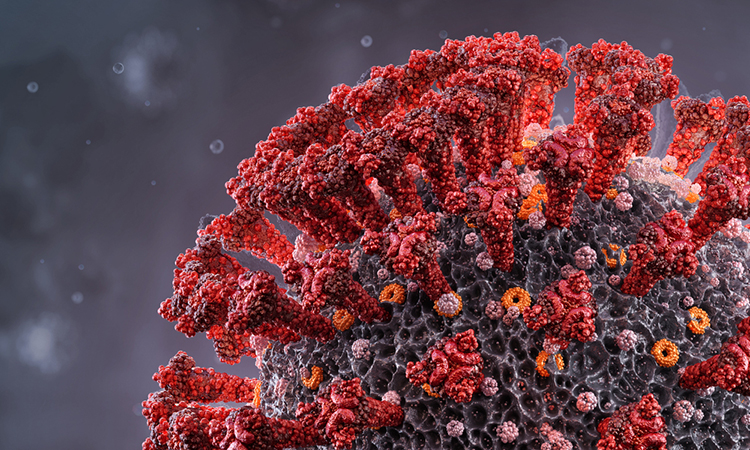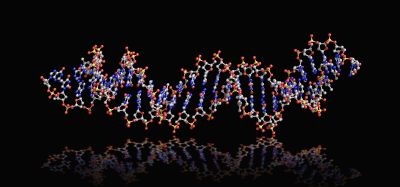SARS-CoV-2 viral peptide fragments cause serious inflammatory response
Posted: 7 February 2024 | Dr Gerard Wong (UCLA), Ellen Capon (Drug Target Review) | No comments yet
In this Q&A, Dr Gerard Wong elucidates the inflammatory capacity of fragmented viral components from the perspective of supramolecular self-organisation.


How does the Artificial Intelligence (AI) system developed by the research team contribute to understanding the interactions between SARS-CoV-2 viral protein fragments and the immune system?
We had built a machine learning classifier that has been trained to identify amino acid sequences that have the potential to mimic ‘host defense peptides’ from the human innate immune system. Such peptides play a critical role in the machinery for amplifying innate immune responses. In other words, the classifier allows us to identify parts of SARS-CoV-2 viral proteins that can cause strong immune reactions, such as those encountered in COVID-19.
Can you elaborate on the significance of the viral protein fragments imitating innate immune peptides and their role in amplifying signals to activate the body’s natural defences?
Despite all the detailed studies of COVID-19 already completed since the pandemic began, it is not clear how viral infection results in the strong but ineffective inflammatory response that characterises COVID-19, such as ‘cytokine storms’ and blood coagulation disorders sufficiently serious to cause heart attacks. It is also not known how skin lesions (ex: ‘COVID fingers’) or the various clinically observed lupus-like syndromes or arthritis-like syndromes come about. The innate immune peptides that are being mimicked by viral fragments potentially allow us to connect to these mysterious conditions. For example, innate immune peptides being imitated by SARS-CoV-2 fragments have a special ability to organise double stranded RNA into structures that strongly amplify activation of the human innate immune system in autoimmune diseases. In this paper, we have shown that the viral fragments can do the same thing and do so in a drastic way.
In what ways do the SARS-Cov-2 fragments differ from those of relatively harmless coronaviruses that cause the common cold, and how does this contribute to the severity of COVID-19 outcomes?
Here the answer is multi-dimensional: first, the viral fragments from SARS-CoV-2 look more like host innate immune peptides compared to those from common cold coronaviruses, as quantitatively measured by the scores from the machine learning classifier we built. Second, SARS-CoV-2 has many more of these high scoring fragments compared to common cold coronaviruses. Third, since SARS-CoV-2 replicates faster than common cold coronaviruses, there are larger numbers of virus particles to fragment.
What implications do the gene expression profile results have for understanding the cellular response to SARS-CoV-2 “zombie” complexes, and how closely does it resemble the gene expression profile in actual COVID-19 cases?
The cellular responses are complicated and will depend on cell type, so more work should be done in this area. To me, it is dramatic that ~0.2 percent of the viral proteome can recapitulate COVID-19 gene expression. How close is this recapitulation? In typical biology studies, a ‘p-value’ of 0.05 is often considered the threshold for being statistically significant. The gene expression ‘transcriptome’ from the cell type we studied has a p-value that is better than this by a factor of 500,000x.
How do the findings of the research reveal the potential treatments options for COVID-19, particularly in terms of managing excessive inflammation and targeting specific enzymes?
This is the first study that systematically examines the effects of SARS-CoV-2 molecular fragments on the host. Our results suggest there may be ways to treat COVID-19 through management of fragments, by inhibiting certain enzymes or enhancing others. One could even imagine a strategy based on inactive decoys that compete with these viral fragments for binding to double-stranded RNA, but form structures that don’t activate the immune system.
Considering the potential impact on future pandemics, how could the knowledge gained from this study be applied to identify coronaviruses with pandemic capabilities?
One can imagine that with a little more work, we can begin to build a surveillance system to detect pandemic capable coronaviruses, or to discriminate between emerging coronavirus strains that are more dangerous or less dangerous. Because the effect comes from viral biomimicry of host immune components, one can imagine that we are not limited to just coronaviruses. Maybe the next pandemic respiratory virus will be an influenza virus rather than a coronavirus. This work can potentially help with that also.
The study was published in PNAS.
Author bio


Professor Wong received his BS degree in Physics from Caltech and his PhD in Physics from UC Berkeley.
He subsequently pursued postdoctoral research on soft matter physics at the FOM Institute for Atomic and Molecular Physics in Amsterdam, and on biophysics and bioengineering at UC Santa Barbara. Wong represented the US in the NSF-MEXT US-Japan Young Scientist symposium on Nanobiotechnology (2005), the Taipei Academia Sinica International Workshop on Soft Matter and Biophysics (2007), and the NSF-DST US-India Nanoscience & Engineering Workshop (2008). He currently serves on the Editorial Board of Physical Review E.
Related topics
Covid-19, Machine learning, Virology
Related conditions
SARS-CoV-2
Related organisations
University of California Los Angeles (UCLA)
Related people
Dr Gerard Wong (UCLA)







